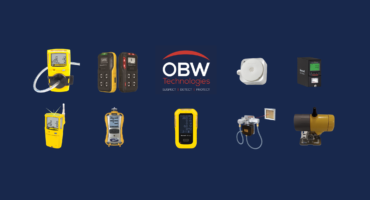Often at OBW Technologies, we get asked about Bump testing and calibration of gas detectors. Our supplier Honeywell Analytics has provided some information, on bump, calibration, and frequency to give all our customer’s peace of mind.
Bump Test
Function Check: A qualitative function check where a challenge gas is passed over the sensor(s) at a concentration and exposure time is sufficient to activate all alarm indicators to a minimum of their lower alarm setting. The purpose of this check is not to confirm the accuracy of sensor response, just that gas can get to the sensor(s) and that all the alarms present are functional.
Accuracy Check: A quantitative function check using a known concentration of gas that is traceable to a recognized standard to confirm that the alarms are functional and that the sensor(s) response is within acceptable limits. Typically, a +/-10% to +/-20% of the applied gas value is considered acceptable unless otherwise specified by the manufacturer, internal company policy, or a regulatory agency.
Calibration
Zero: Establishes sensor(s) baseline reading, 20.9% oxygen, and free of any toxic or combustible gas vapours. To maintain a stable baseline, it is essential to perform zero in fresh air. In the event, fresh air cannot be confirmed, use zero-grade air or N2 to perform a detector zero. Perform a zero to reestablish baseline as required, and before a span calibration.
Span calibration: The adjustment of the sensor(s) response to match the value of a known concentration of applied gas that is traceable to a recognized standard. The calibration procedure should be done in accordance with the equipment manufacturer’s instructions.
Direct Reading Portable Gas Monitors:
If you are interested in booking your unit in for calibration please click here
OBW Technologies also provides bump test stations.
From the Blog



If you have any questions about our products or services, please feel free to contact us.

Join our mailing list to receive the latest news and updates from our team.